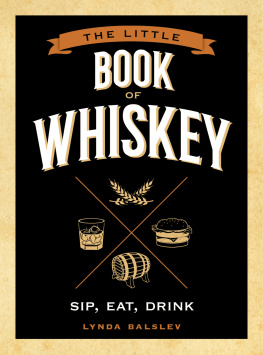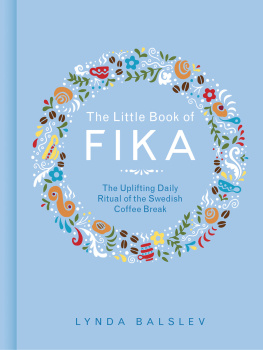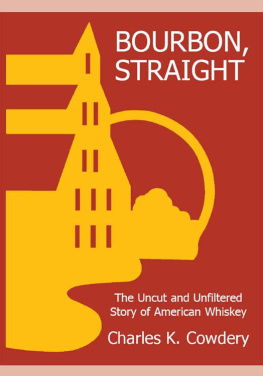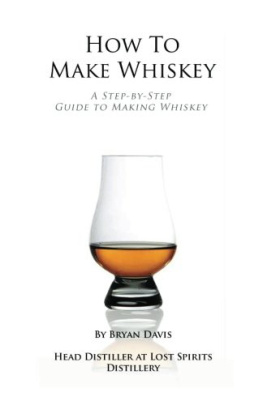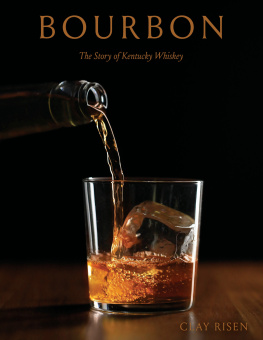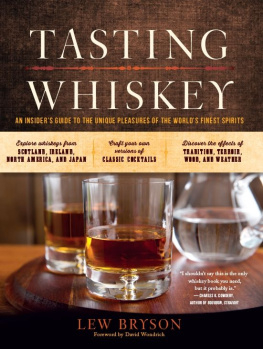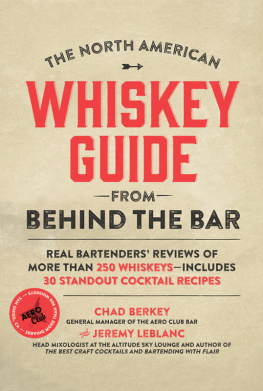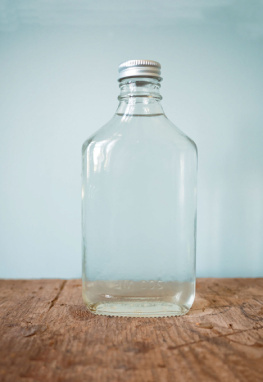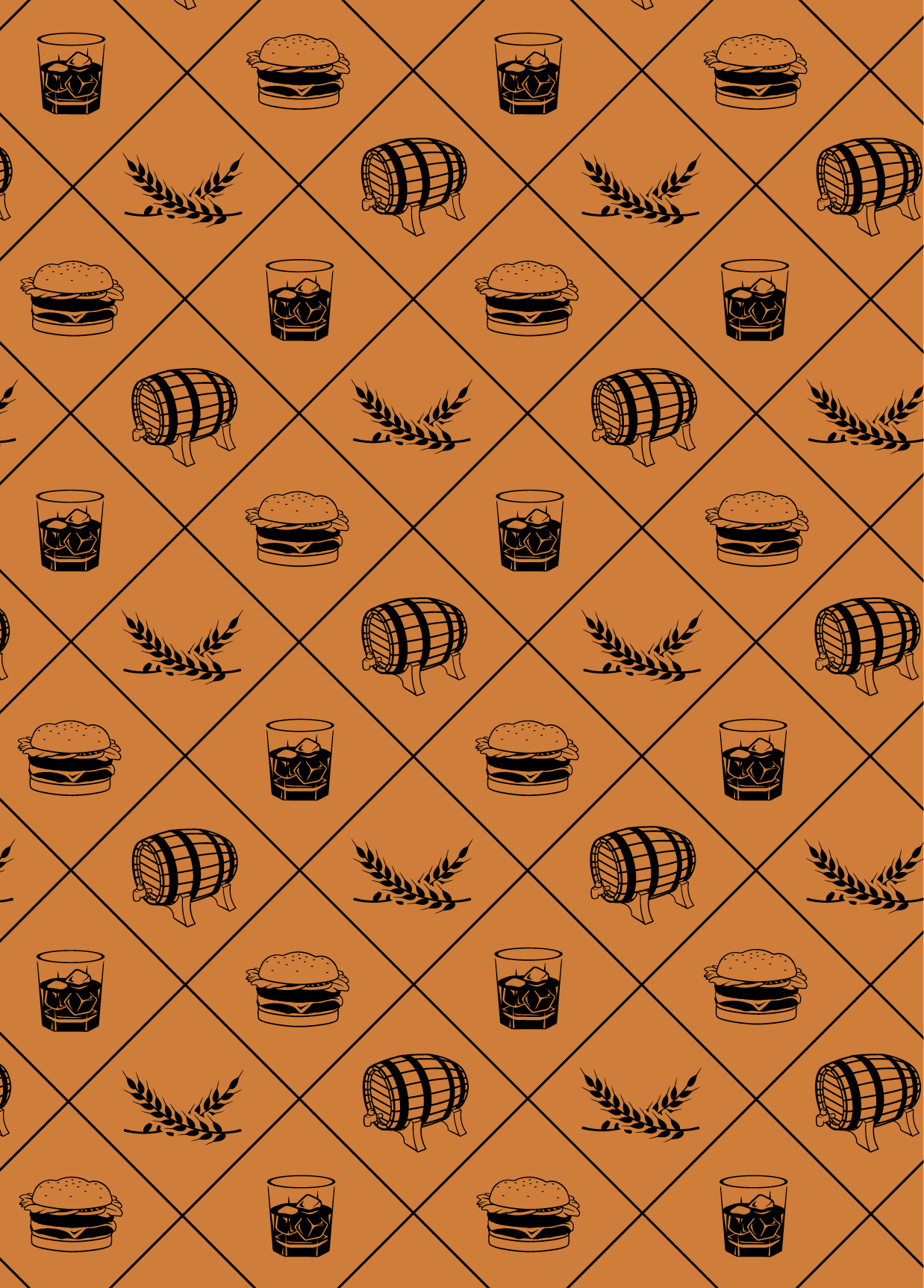Civilization begins with distillation.
William F aulkner
author
Contents
Origin and History:
A Murky Past
Sniff and Sip:
How to Drink Whiskey
Lets Party:
How to Host a Whiskey Tasting
The Proof Is in the Pudding:
Cooking and pairing food
with Whiskey
metric conversions
and equivalents
I wish to live to 150 years old, but the day I die, I wish it to be with a cigarette in one hand and a glass of whiskey in the other.
Ava G ardner
actress and singer
Never
cry over
spilt milk.
It couldve
been whiskey.
B ret (Pappy) Maverick
maverick (1957)
What whiskey
will not cure, there
is no cure for.
Irish proverb
W hiskey: Its not just your Dads drink. Women and men of all ages are exploring and imbibing whiskey. State-of-the-art distilleries, whiskey bars, whiskey tastings, and food pairings are increasingly common, and with them come a growing curiosity and interest in learning more about this spirit made from distilled malted grains.
Whiskeys flavors and blends are numerous and nuanced, with hints of spice, caramel, coffee, vanilla, and smoke. These characteristics not only add complexity to each snifter sip, they lend depth and flavor to foodeither as an accompaniment or a recipe ingredient.
Whether you drink whiskey or cook with it, this book provides a spirited introduction to the water of life, with tips on how to drink, entertain, and cook with whiskey, including twenty-five recipes for sweet and savory dishes, as well as creative beverages and cocktails.
Courage is
a vitamin best
swallowed
with whiskey.
J arod Kintz
author
Some of you say
that religion makes
people happy
so does whisky.
Clarence Darrow
T he word whiskey derives from the Irish or Gaelic words uisce beatha or uisge-beatha , which are translations of the Latin term aqua vitae or water of life, meant to describe spirits.
The origin of whiskey is somewhat murky. Its agreed that whiskey originated in the British Isles, yet, depending on which side of the Irish sea you sit, there are differing opinions (best discussed over a dram) as to whether the precise origin was in Ireland or Scotland.
For the record, whiskey distillation can be traced as far back as the fifteenth century. The Irish monks are often credited with introducing the technique of distillation from their travels in the Middle East during
the Middle Ages, where they witnessed grape distillation; and the barber surgeons, who worked in the Irish monasteries, distilled spirit alcohol for medicinal purposes. The Irish will tell you that following the dissolution of their monasteries in the sixteenth century, the newly independent monks introduced whiskey-making to the Scottish Highlands and shared their distilling craft. Meanwhile, the Scots, with their own faithful take on the origin, might argue that whiskey distillation naturally evolved on their home turf from their abundance of barley grain.
As for the first distilleries, the Old Bushmills Distillery, in what is now Northern Ireland, began manufacturing whiskey in 1608, and Irelands Kilbeggan Distillery was established in 1757 as the first licensed distillery in the British Isles. From that point on, distilleries were born on both sides of the Irish Sea.
Whisky is
liquid sunshine.
George Bernard Shaw
W hiskey is a distilled alcoholic beverage made from fermented grain mash, which is essentially a weak beer. Different grains can be used to make whiskey, including barley, corn, rye, and wheat, and the amounts and choice of grains reflect and define the provenance and type of whiskey. For instance, Scotch whisky is predominantly made of malted (germinated) barley, while corn is the dominant grain in bourbon, and rye is the dominant grain (surprise) in American rye.
Malting
Whiskey begins as a grain, often barley, that contains starch that needs to be turned into soluble sugars to make alcohol. Malting is the process of soaking the grain for two to three days and then allowing the moist grain to slightly germinate, which converts the starch to sugar. Once the grain shoots, the process is stopped by drying it in a kiln. The grain is now malt, which is ground down.
Mashing
The ground-down grain (or grist) is added to water to extract the soluble sugars before fermentation. The combination of malt and water is called mash. The mash is agitated in a large tank to dissolve and extract the sugars, which are drained off, and this liquid is called the wort.
Note that the source of the water will influence the flavor of the final spirit, with varying minerals and pH levels, so location plays a distinguishing key in whiskey character. For instance, Kentucky bourbon whiskey is made with limestone-filtered spring water, which is naturally purified and mineral-rich, with elevated pH levels. Scotch whisky sources its water from lochs, rivers, and springs, with varying mineral and pH levels, and the sources proximity to the sea can add brininess to the flavor.
Fermentation
The wort is passed into a tank, where yeast strains are introduced to begin fermentation, which is the conversion of sugars to alcohol. The process takes about forty-eight hours, resulting in a low-alcohol liquid similar to beer, aptly called distillers beer, which is then distilled.
Distillation
Distillation is the process of heating a liquid and creating a vapor, which is captured and condensed into another liquid. This method is done with pot or column stills. Pot stills are usually made of copper and, as the name implies, shaped like a spherical pot, and they operate on a batch-by-batch basis, which is best suited for smaller production. Pot stills are the earliest design, having evolved from the ancient alembic, which was used for alcoholic distillation as far back as the ninth century. Column stills, also known as Coffey stills, were developed later in the nineteenth century. They are sleek and industrial, and can be made of copper, stainless steel, or a combination of the two. Column stills operate continuously, so they are better suited for larger-scale production.
The number of distillations varies based on the whiskey and the producer. For example, Scotch whisky is usually distilled twice, while Irish whiskey is usually distilled three times. With each round of distillation, the whiskey becomes more pure and smooth.
Maturation
Once the liquid is distilled, the spirit is put into wood (often oak) barrels to age. The nature of the barrelsuch as the source of the wood and whether the cask has been formerly used to mature other types of spirits, such as sherry, port, or rumwill influence the color, aroma, and flavor of the whiskey. The spirit is left to mature in warehouses for a minimum of two to three years (depending on the whiskey) and up to twelve, fifteen, or even thirty years.

